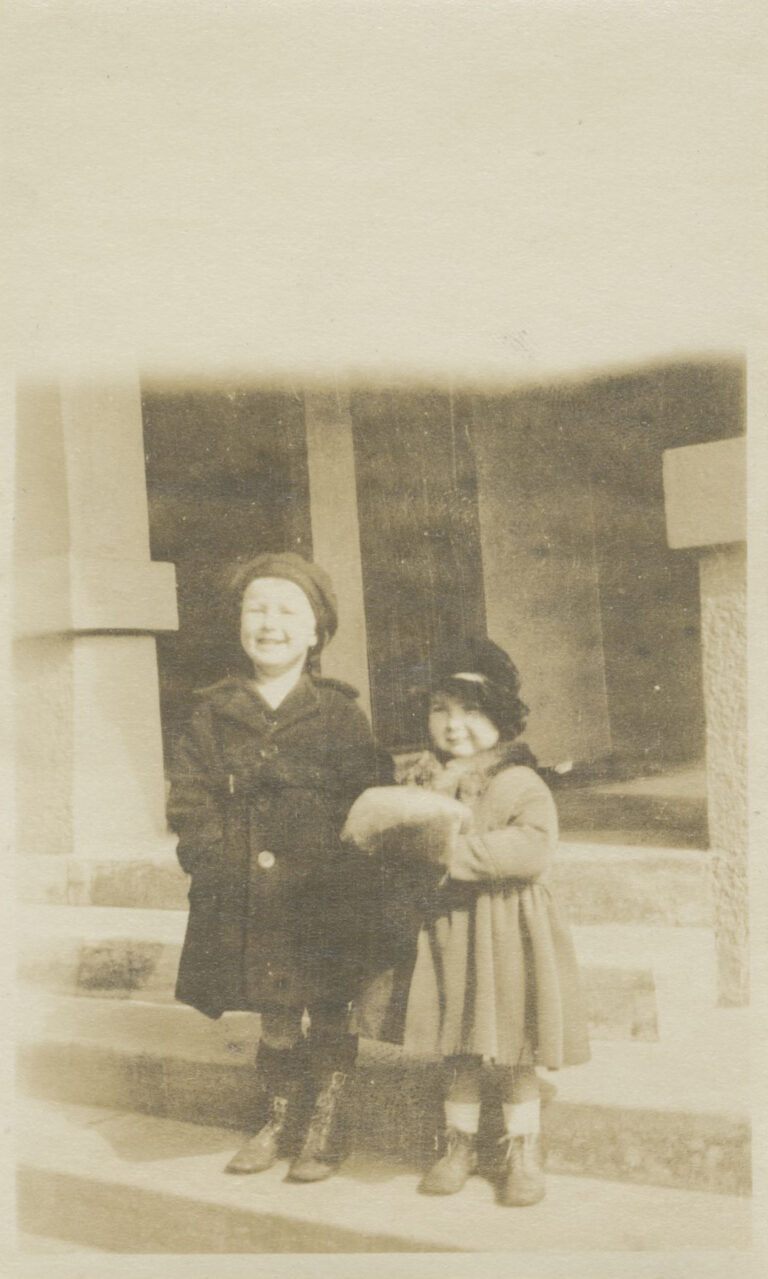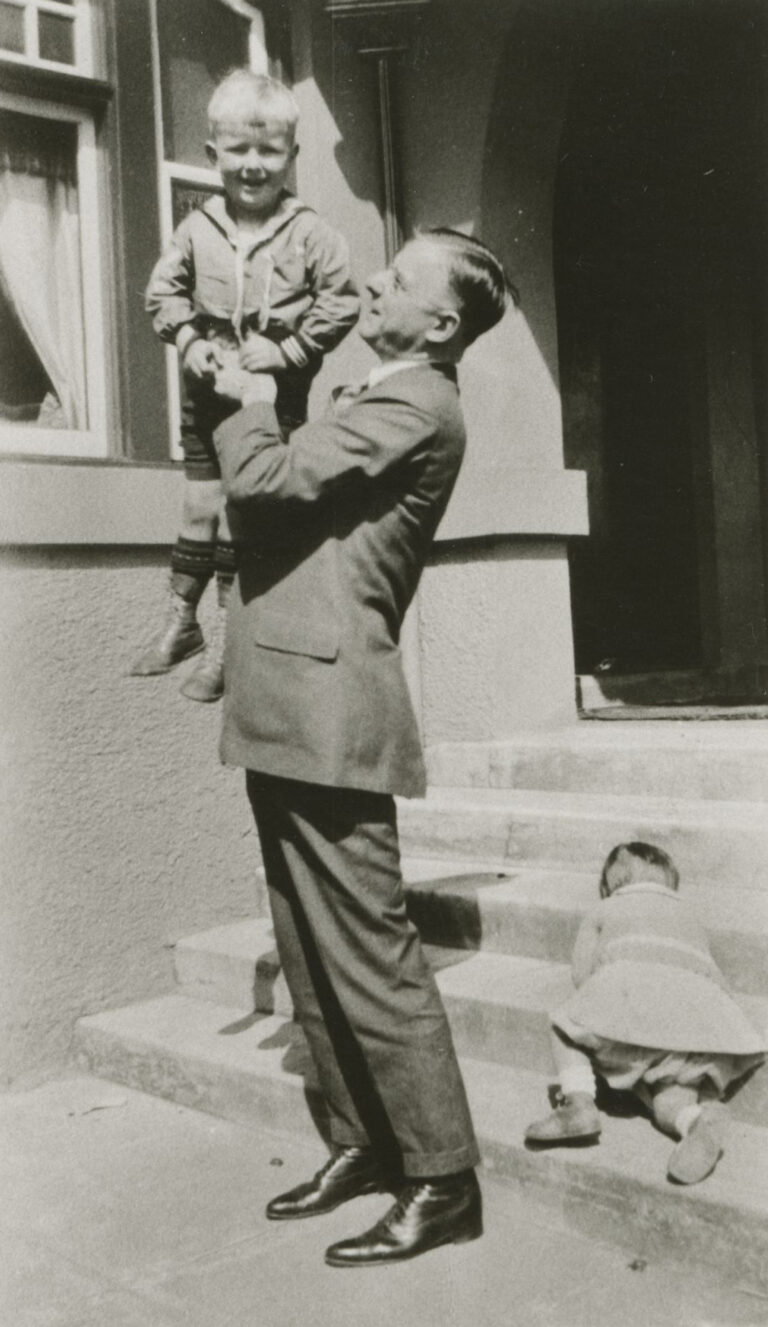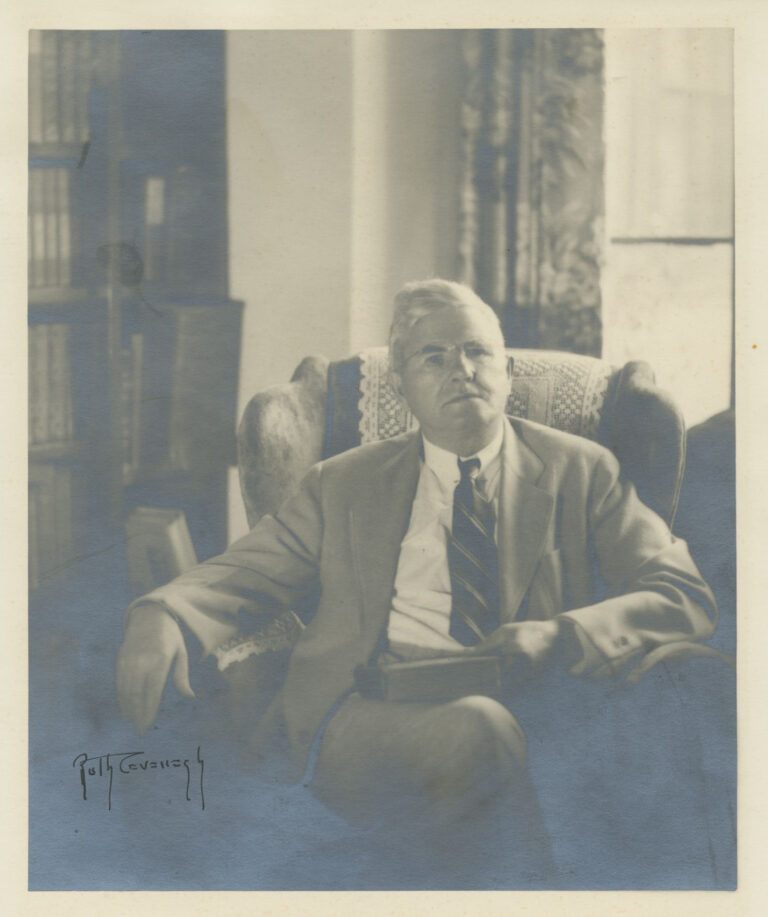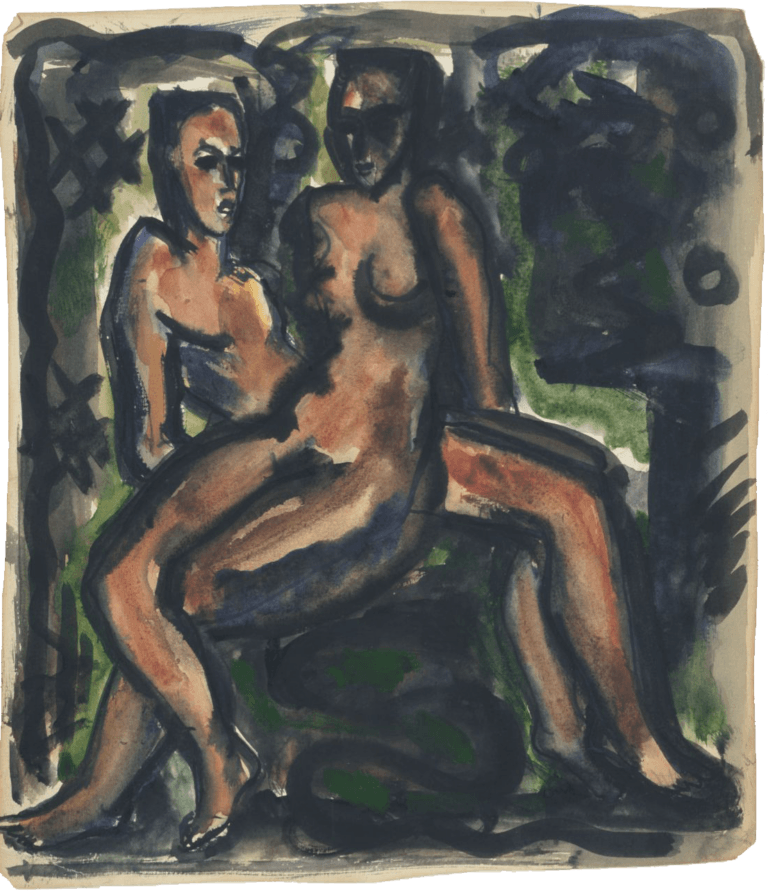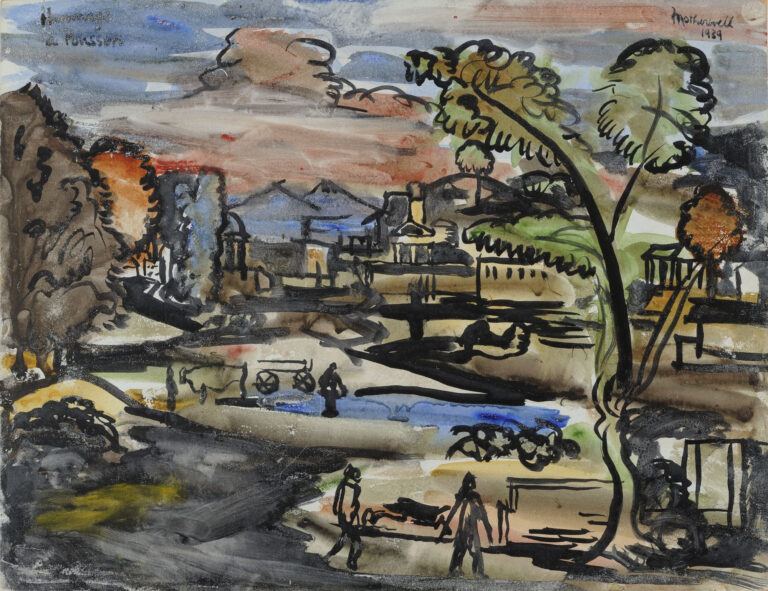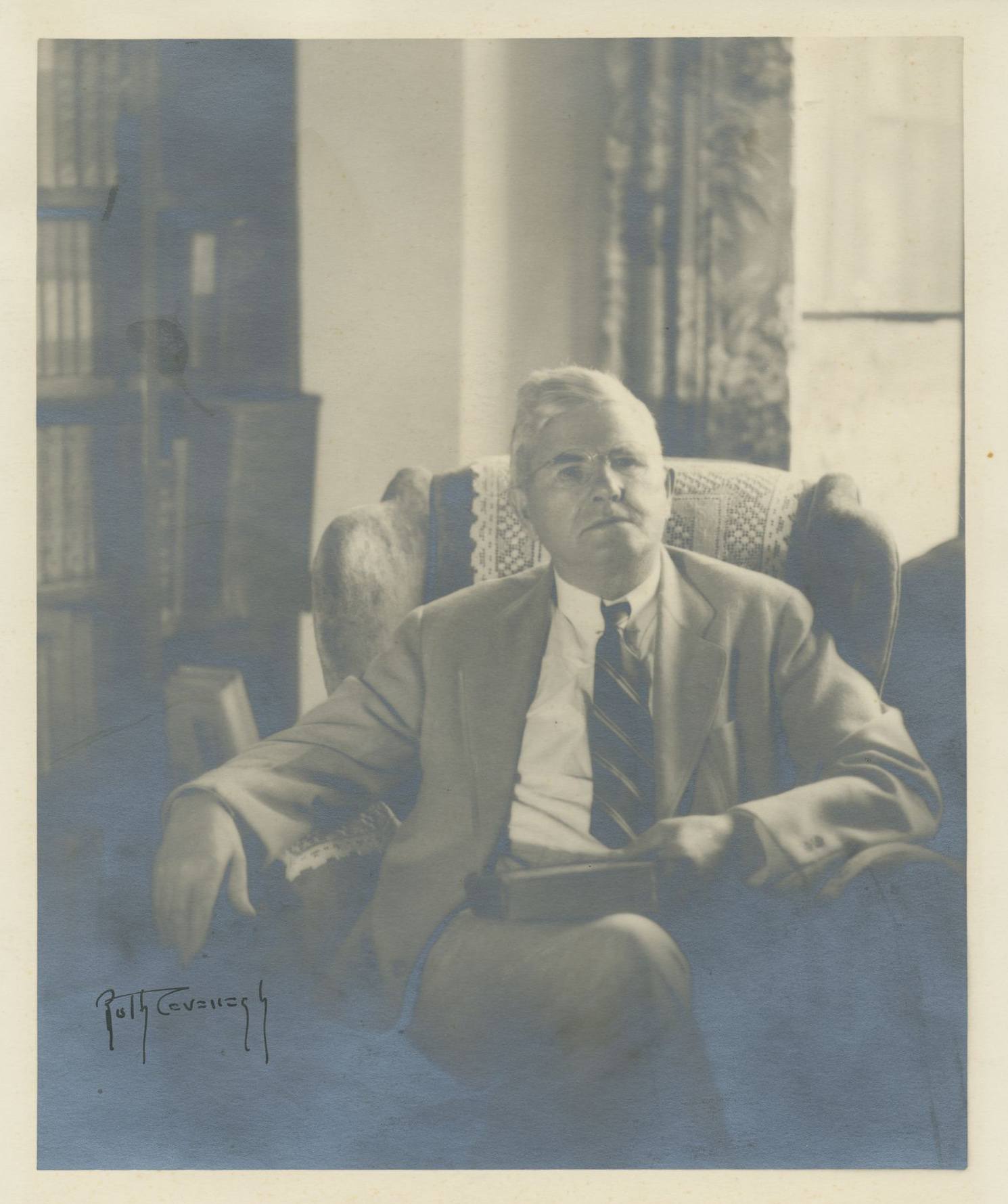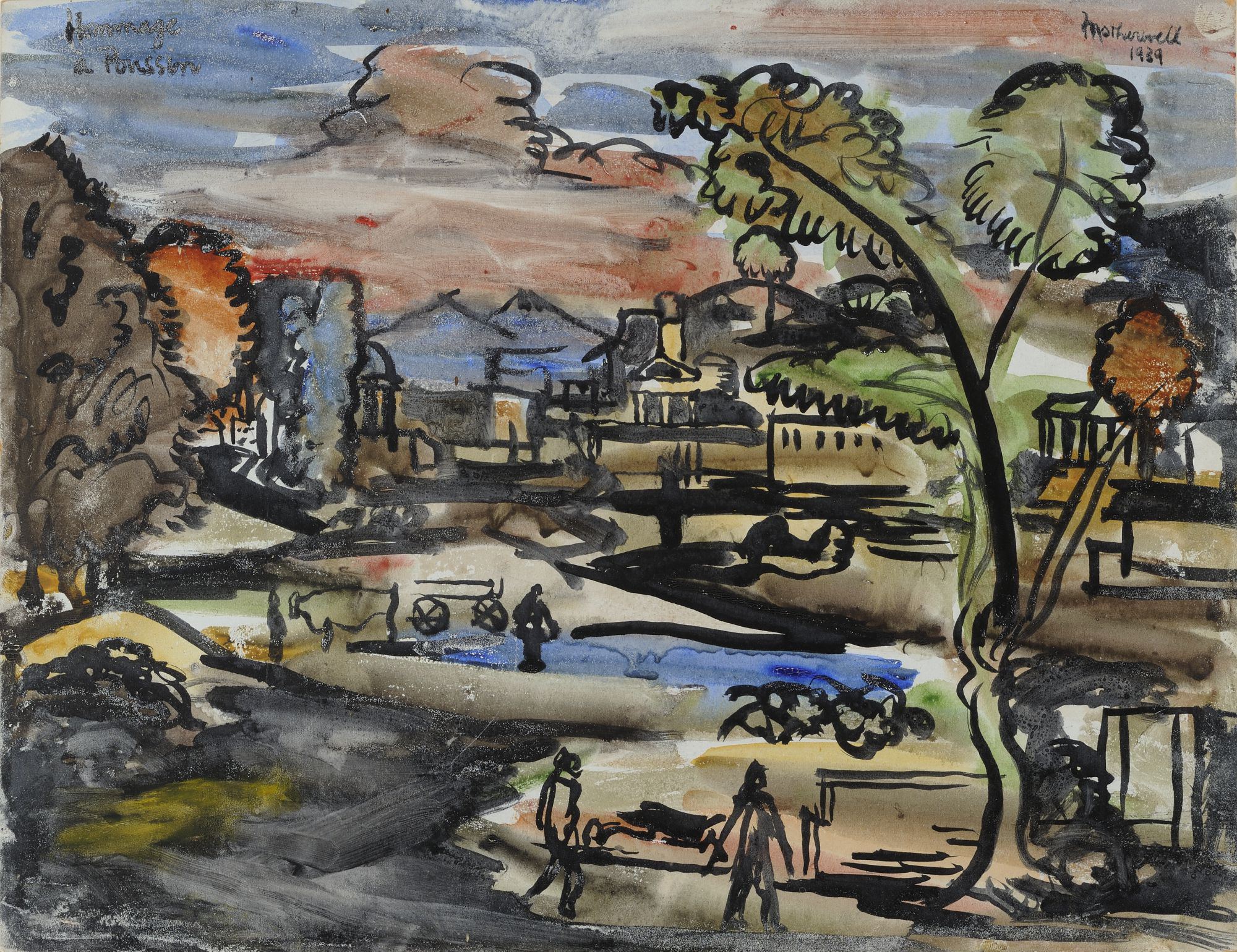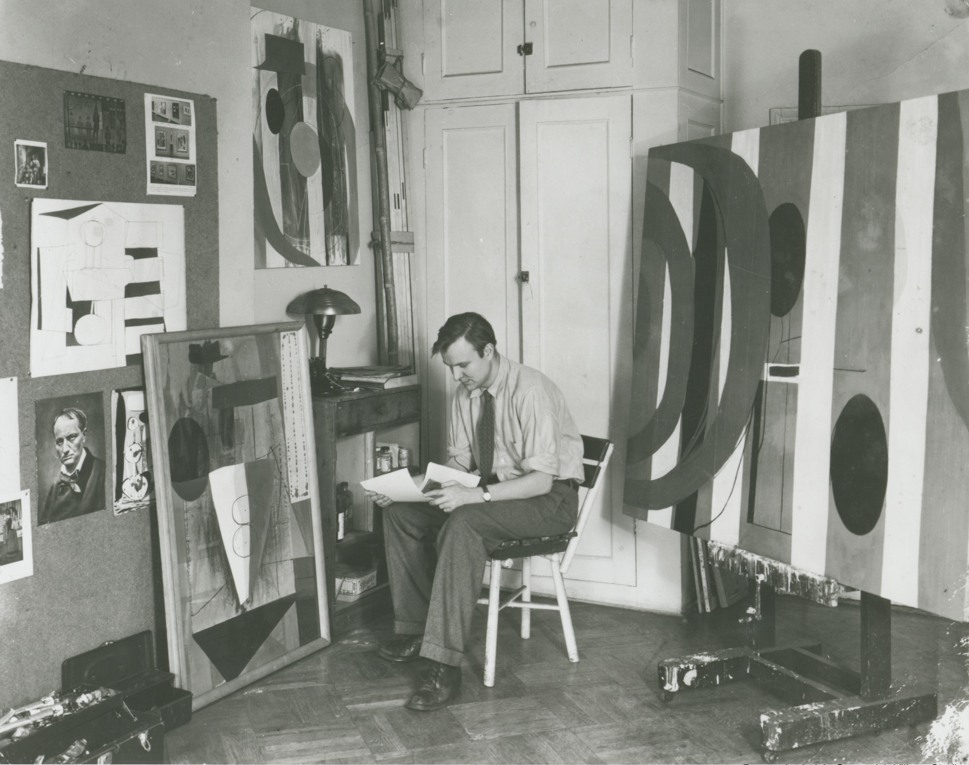Your browser is out-of-date!
Update your browser to view this website correctly. Update my browser now
1915 - 1939
Early Life & Education
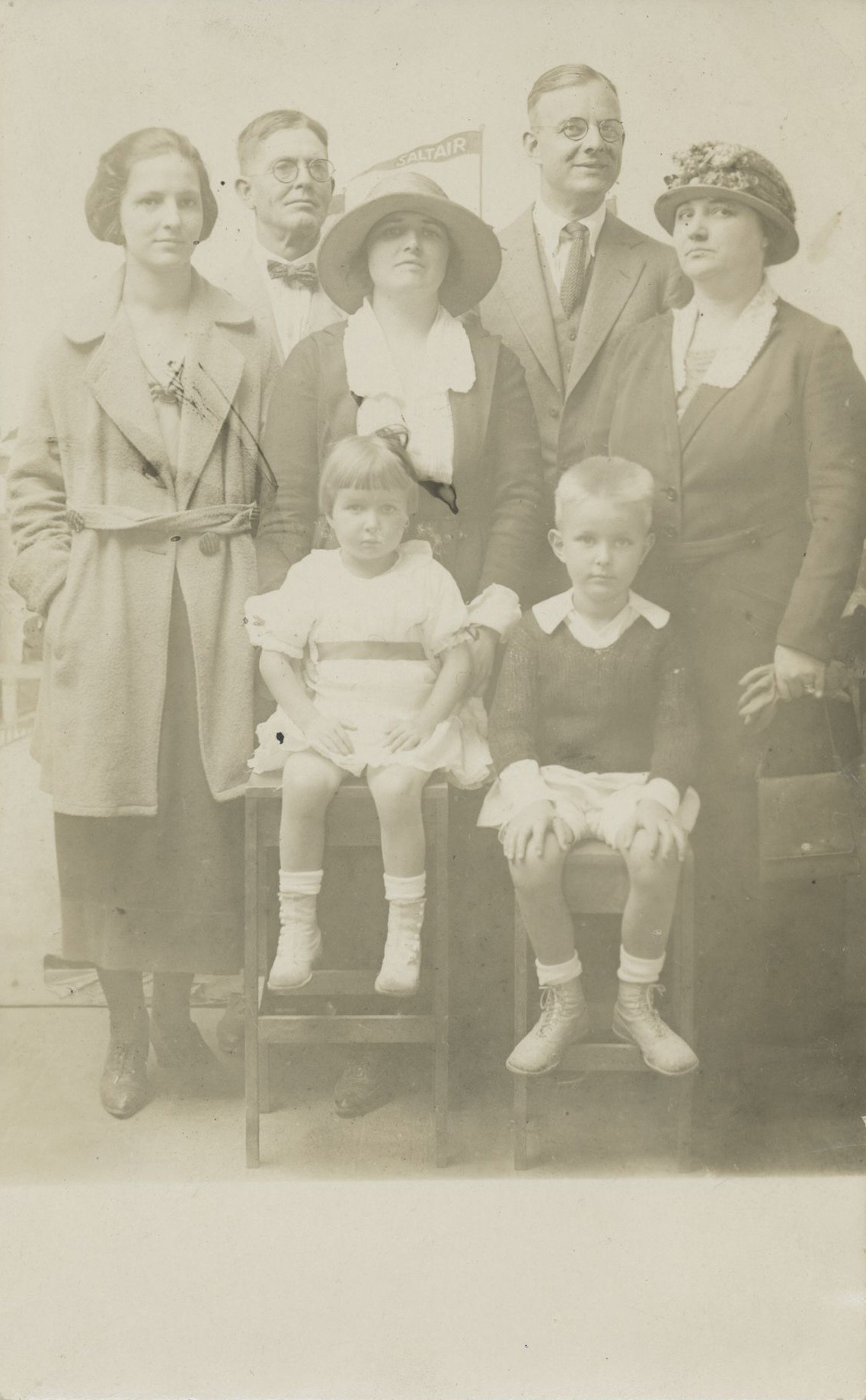
Motherwell (seated at right) and his family, ca. 1920
1915
Robert Burns Motherwell III is born on January 24 in Aberdeen, Washington to Robert Burns Motherwell II, a banker, and Margaret Lillian Hogan, the daughter of a prominent local attorney.
1916-1925
In 1916, Motherwell’s sister Mary Stuart is born. The Motherwell family moves frequently, following the demands of his father’s job with the Federal Reserve Bank. The family spends every summer in Cohasset Beach in Westport, Washington, where his maternal grandfather, John Carol Hogan, has a summer cottage. His grandfather imparts a passion for books to his grandson. In his grandfather’s library, Motherwell will later read the works of Turgenev, Dostoyevsky, Darwin, and Shakespeare.

Motherwell, approximately age ten, ca. 1925
1926
During a summer vacation at Cohasset Beach, Motherwell is introduced to Lance Hart, a painter and professor of art at the University of Oregon in Eugene, Oregon. Hart, who was a childhood friend of Margaret Motherwell’s, encourages Motherwell’s love of art.
1926
In the fall, Motherwell wins a scholarship to the Otis Art Institute. He wants to join the life drawing classes but the school refuses because of his age. Motherwell quits after three months.
1927
The family moves back to San Francisco in 1927 and Motherwell often visits the M.H. de Young Memorial Museum. In 1927, he develops severe asthma.
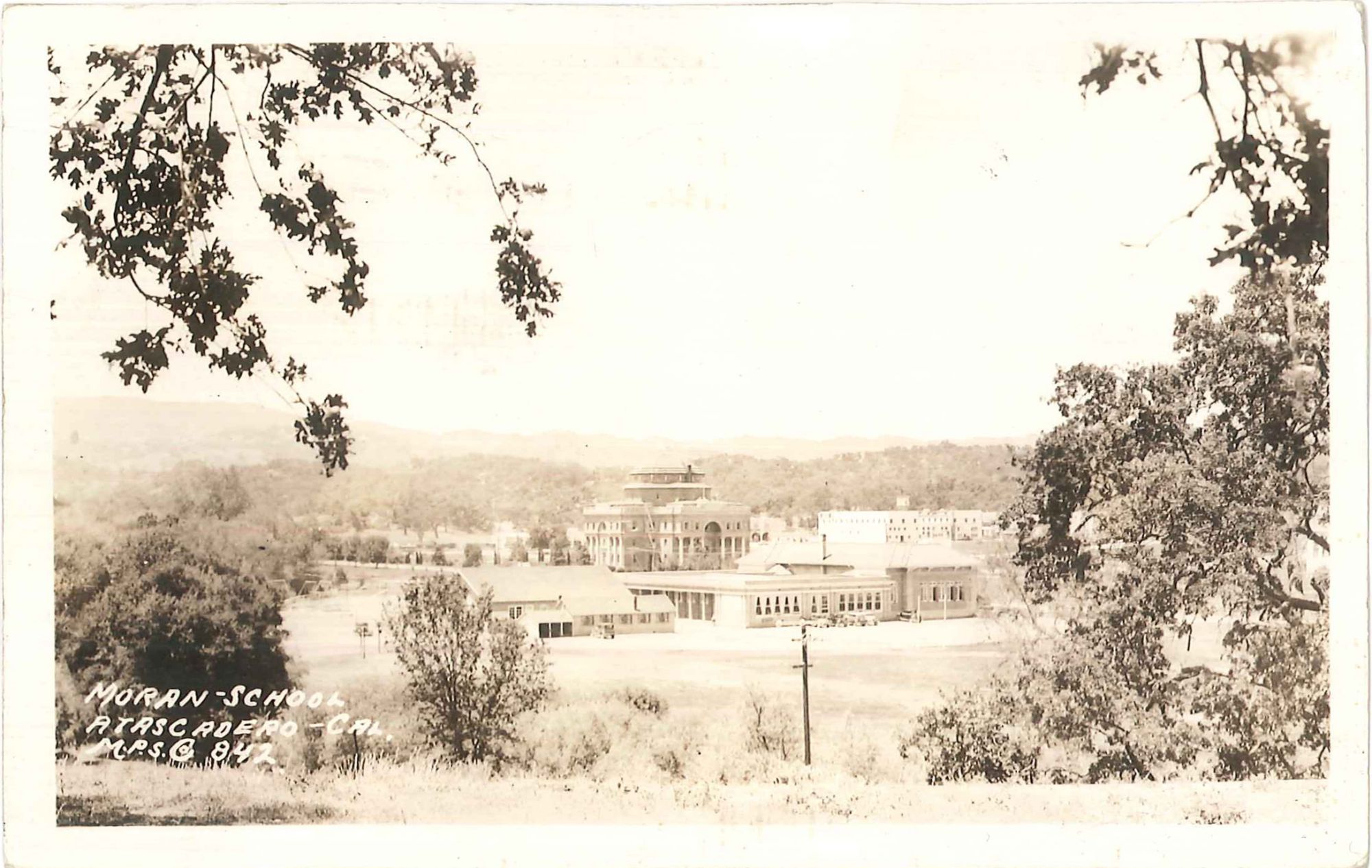
Postcard showing Moran Preparatory School, Atascadero, California
1929
Motherwell is sent to Moran Preparatory School in Astascadero, California, where his health improves thanks to the arid climate.
At Moran, his interest in art continues to develop. He spends his free time drawing and copying old master works from books, including Michelangelo’s Sistine Chapel ceiling, Rubens’s Marie de Medici series, and portraits by Rembrandt. He discovers a reproduction of a late landscape by Paul Cézanne in the school’s library and makes several copies in watercolor, crayon, and chalk.
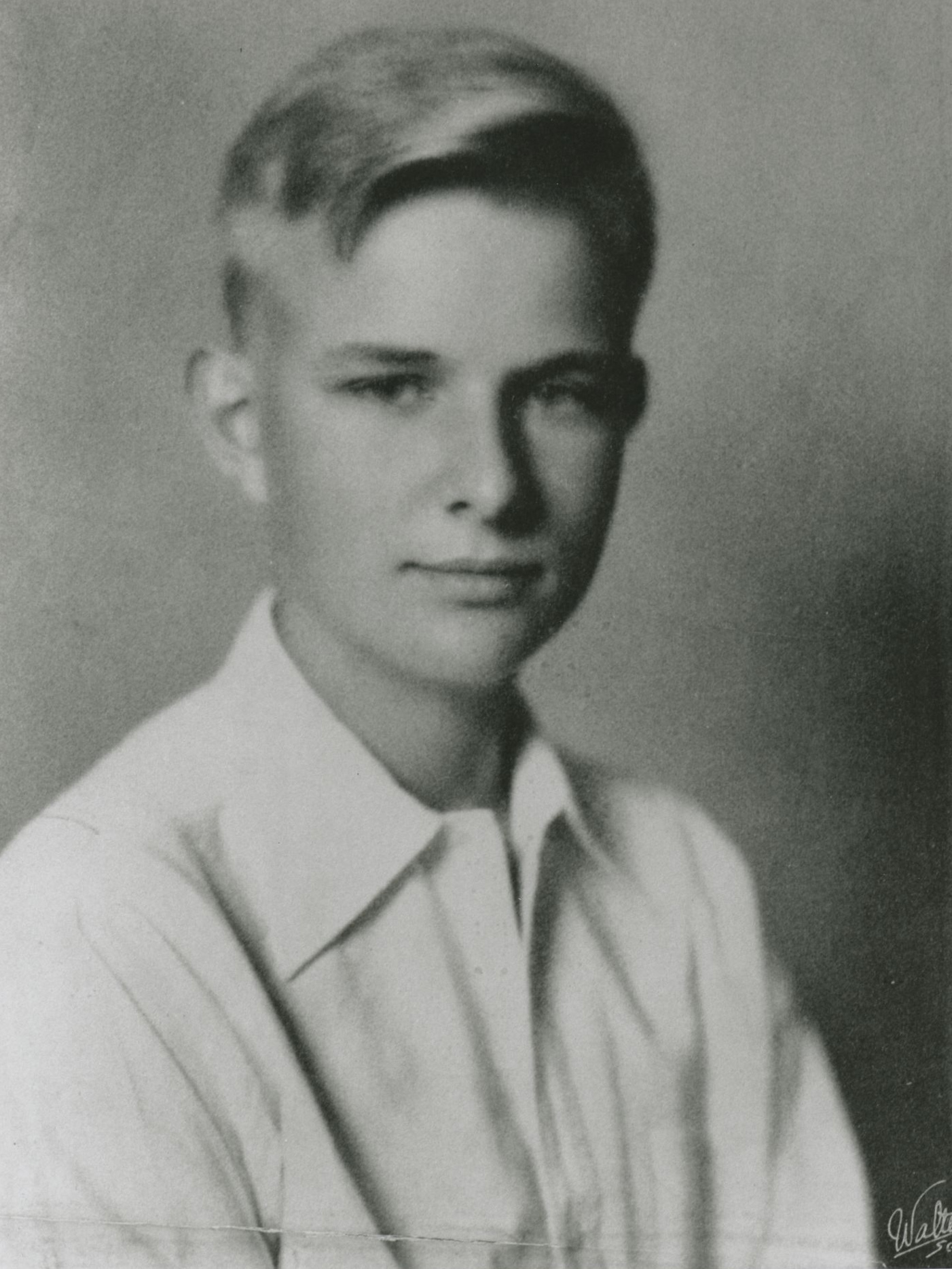
Motherwell, age fifteen, 1930
1930-1931
In the summer of 1930, he enrolls in classes at the California School of Fine Arts, San Francisco: Elementary Drawing with Nelson Poole, Still Life Painting with Otis Oldfield, and Anatomy with Lee Randolph; the teachers are well-regarded regional painters.
In the spring of 1931, he sees the exhibition The Blue Four: Feininger, Jawlensky, Kandinsky, and Klee at the California Palace of the Legion of Honor, San Francisco, which he later recalls as, “the only show which ever shocked me.”
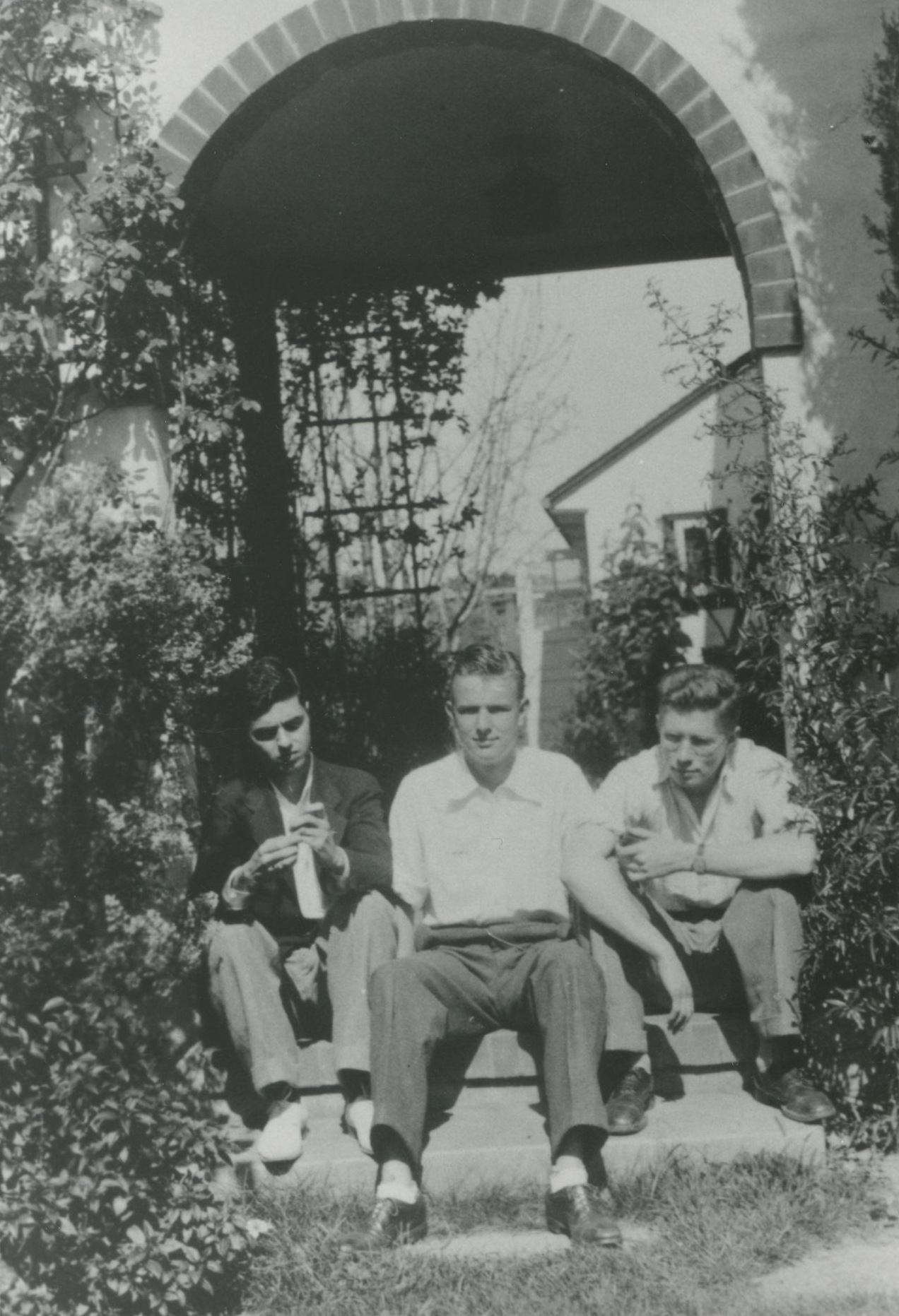
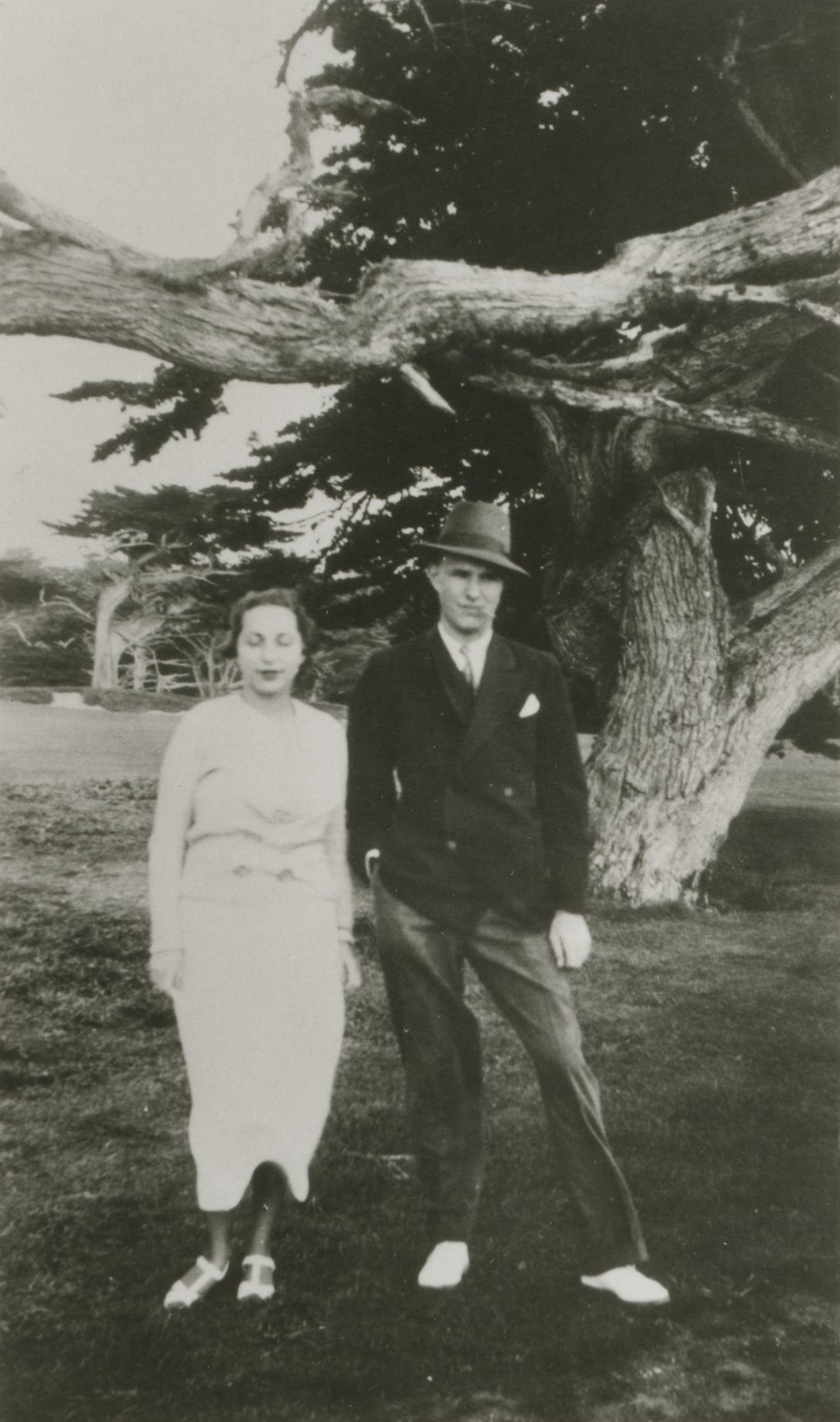
1932
He graduates from the Moran school as valedictorian in May 1932 and in the fall begins study at Stanford University, where his initial focus is on literature.
1934
In the middle of his junior year, he declares philosophy as his major, and takes a broad range of courses, the most notable being Contemporary Philosophy, where he encounters the writings of John Dewey. Dewey’s Art as Experience (1934), with its emphasis on direct experience as an essential element of artistic creation, exerts a profound influence on his thought.
1935
Motherwell spends the summer in Europe with his father and sister, traveling to France, Italy, Switzerland, Germany, the Netherlands, England, and Scotland, where they visit the town of Motherwell.
In Paris, Motherwell purchases a copy of James Joyce’s Ulysses (1920), which at the time was banned in the United States. From this time forward, Joyce would be a major source of inspiration for him.

Motherwell, age twenty, 1935
1935
At the home of Michael and Sarah Stein in Palo Alto, he sees works by Henri Matisse, an experience that electrifies him and deepens his passion for modern art. Of his encounter with Matisse’s work, he will later recall: “It went through my heart like a golden arrow and I had one real intuition immediately. I thought, this is what I want to belong to.”
He begins a two-semester independent study with Albert Guerard, where he first reads the works of the French Symbolists (Baudelaire, Valéry, Rimbaud, and Mallarmé) and contemporary American modern poets (Crane, cummings, Eliot, Pound, Stevens, and Moore).
1937
In the spring, Motherwell receives his B.A. from Stanford University. His senior thesis is a study of Eugene O’Neill’s use of psychoanalytic theory. In San Francisco he hears André Malraux speak in passionate defense of the Republican cause in Spain.
Motherwell enrolls in a painting class at the California School of Fine Arts, San Francisco.
Urged to choose a practical career by his father, Motherwell enters Harvard University’s Department of Philosophy, where he studies with Arthur O. Lovejoy and with David W. Prall, a charismatic young professor whose major works include Aesthetic Judgment (1929) and Aesthetic Analysis (1936). Motherwell takes a seminar with Prall on Spinoza’s Ethics and an independent study on aesthetics. Prall, a passionate teacher and active member of the Teacher’s Union, becomes Motherwell’s mentor. Lovejoy’s two-semester seminar, The History of Ideas: The Concept of Romanticism, leads Motherwell to The Journal of Eugène Delacroix as the topic for his thesis.
Motherwell also attends a series of six lectures by Alfred North Whitehead at Wellesley College. Whitehead’s talks, which are published a year later as Modes of Thought, make a profound impression on Motherwell, who will return to Whitehead’s ideas throughout his career. Motherwell will later credit Whitehead for preparing the way for his seemingly intuitive grasp of abstraction.
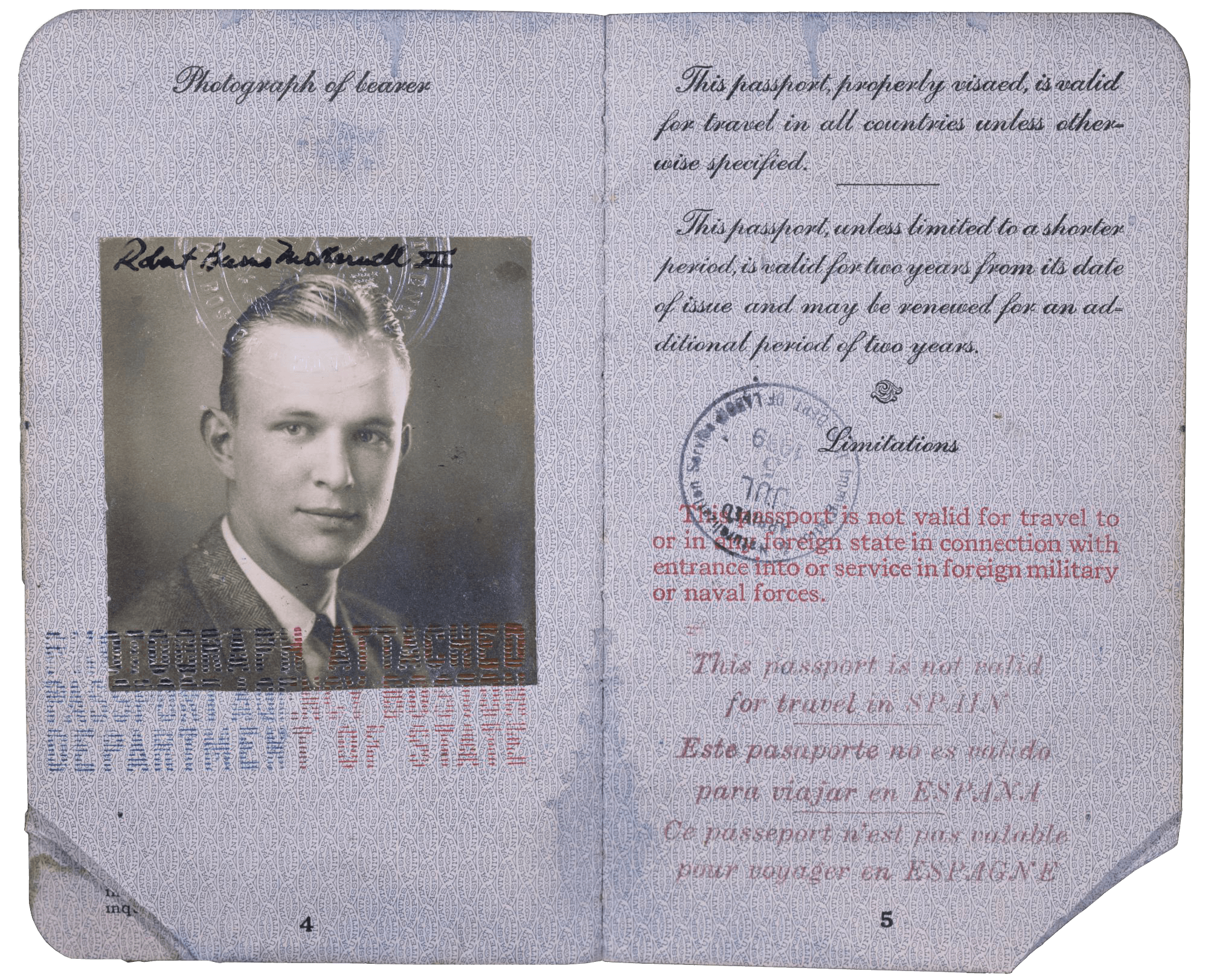
Motherwell’s passport, 1938
1938
In the spring, Lovejoy and Prall encourage him to spend a year in France to complete his thesis on Delacroix. Motherwell arrives in France on June 20 and studies at the Université de Grenoble through the summer.
1938
In September, Motherwell moves to Paris with the intention of working on his thesis, but he spends little time on it, except to assemble a substantial library on Romanticism in general and Delacroix in particular.
He rents a room in a pension at 5 Rue de la Chaise in the Seventh Arrondissement. Seeing Picasso arrange objects in a collage-like manner on his table at the Café Deux Magots makes a lasting impression on him.
1938
In the fall, he enrolls in the Académie Julian, where he studies with Jean Souverbie, but the formal academic training does not suit him. He is impressed by an exhibition of collages by Henri Laurens and another of watercolors by Raoul Dufy. He purchases a small watercolor by Georges Rouault depicting a nude in black stockings, which he treasures for the rest of his life.
1938—1939
He spends several weeks overseeing the set design for a production at the American Little Theater. The experience encourages him to rent a studio on the rue Visconti and to begin painting regularly.
In June, Motherwell has a small solo exhibition at the Raymond Duncan Gallery in June 1939; it includes paintings influenced by the work of Rouault and Dufy.
1939
That summer, Motherwell’s father insists that he return to the United States because of the approaching war. Motherwell’s thesis on Delacroix, along with his translation of Paul Signac’s D’Eugène Delacroix au Néo-Impressionnisme, is lost in transit.
When he returns to Harvard, Prall offers him a position as his teaching assistant, but Motherwell turns it down in order to pursue his new commitment to painting.
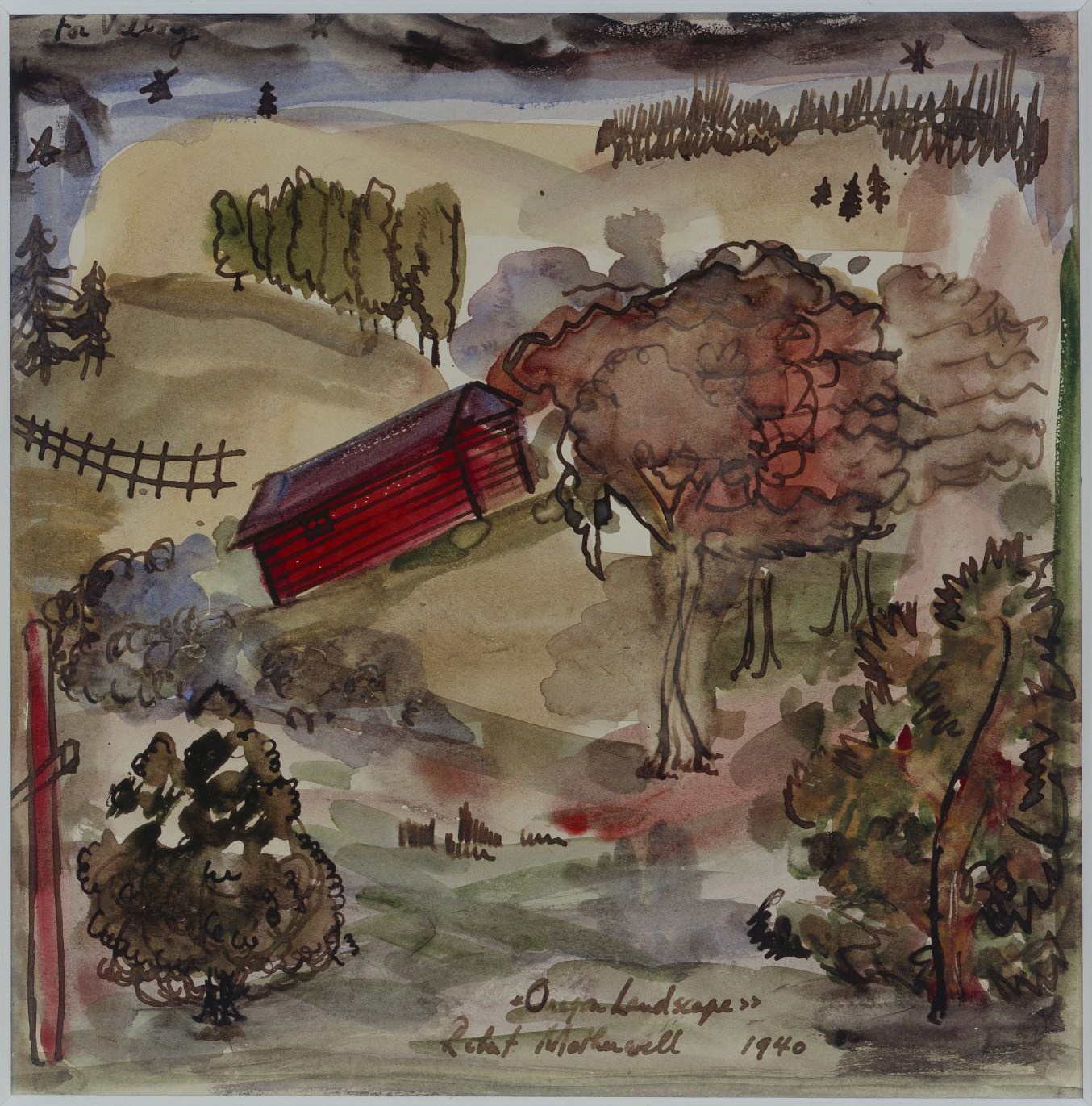
Oregon Landscape, 1940
1939
In the fall, Motherwell returns to Cohasset Beach in Washington to spend time with his family. Lance Hart helps him secure a one-year appointment to the art department faculty at the University of Oregon, Eugene.
Motherwell teaches three courses at the University of Oregon during the 1939—1940 academic year: aesthetics, contemporary architecture, and the history of modern art.
He continues to paint regularly, from postcards and photographs, as well as from the surrounding landscape and his imagination.
1939
He exhibits a half-dozen works in juried exhibitions at the San Francisco Museum of Art and the Portland Art Museum during the spring and summer.
Under pressure from his father to make plans for his future, Motherwell recalls the advice of his friend the composer Arthur Berger, that he look into studying with Meyer Schapiro at Columbia University.

